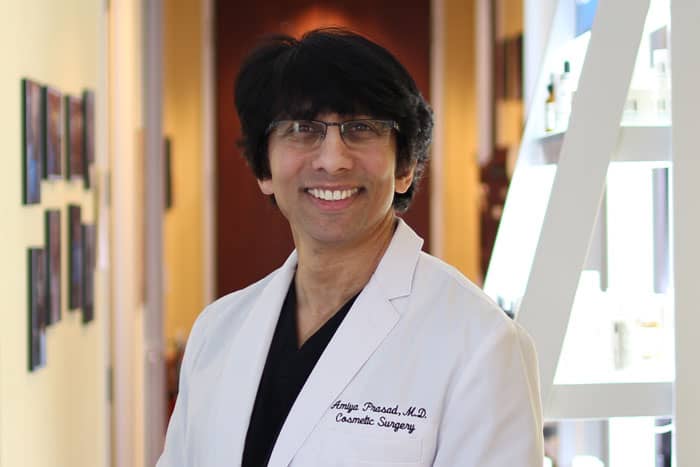Ptosis is a medical term that means “droop”, so we call it eyelid ptosis when the eyelid droops. Ptosis, or drooping eyelids, is also known as a “lazy eye.” If you or someone you know has one or both eyes partially closed, it may be ptosis. In most cases, ptosis correction surgery can improve both appearance, and vision. I’ll explain what causes the most common types of ptosis, as well as how I work with my patients to develop a strategy that has the best chance of success.
When I meet a patient with ptosis, I begin by reviewing their history to determine whether they were born with ptosis or if it developed ptosis later in life. Ptosis is referred to as congenital ptosis when it is present at birth, and acquired ptosis if it develops later in life. In either case, I first rule out any neurologic causes of ptosis before discussing surgical options. Ptosis is caused by a condition that affects the levator muscle.
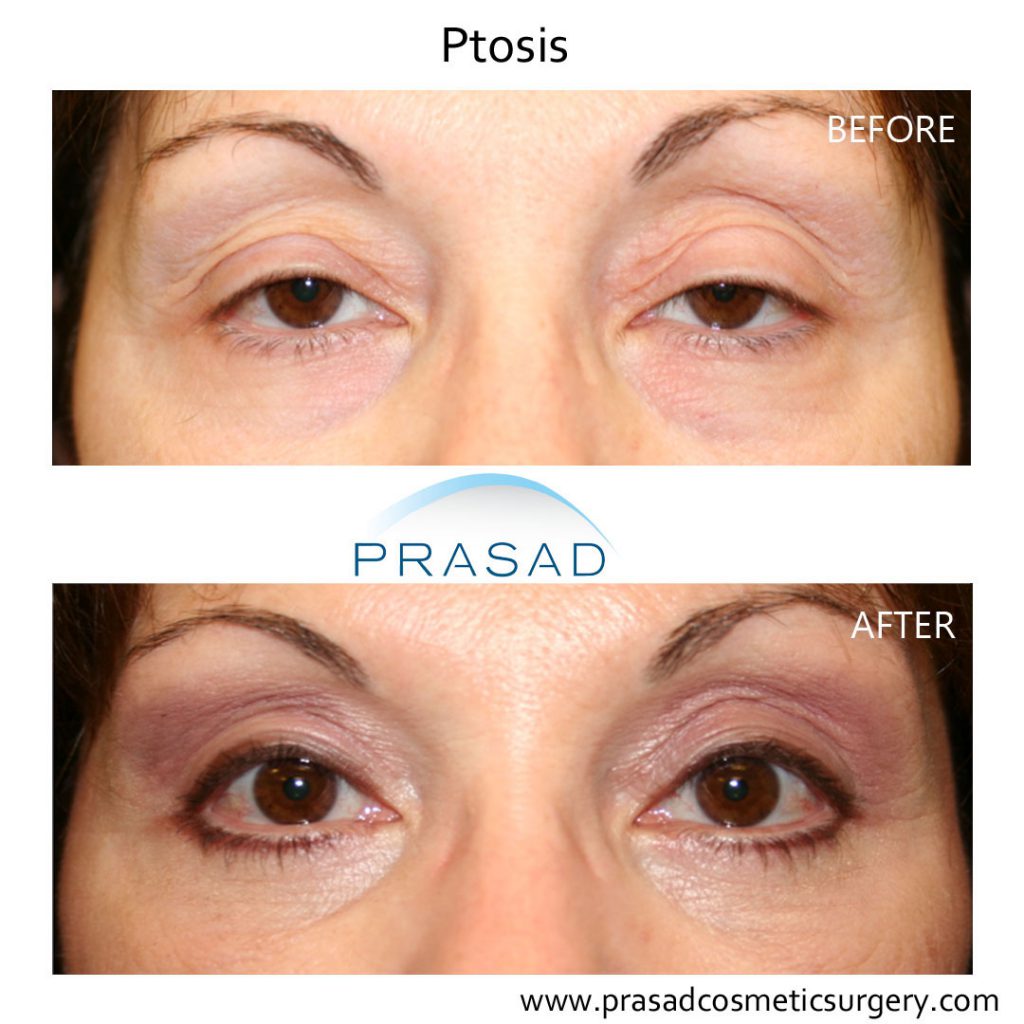
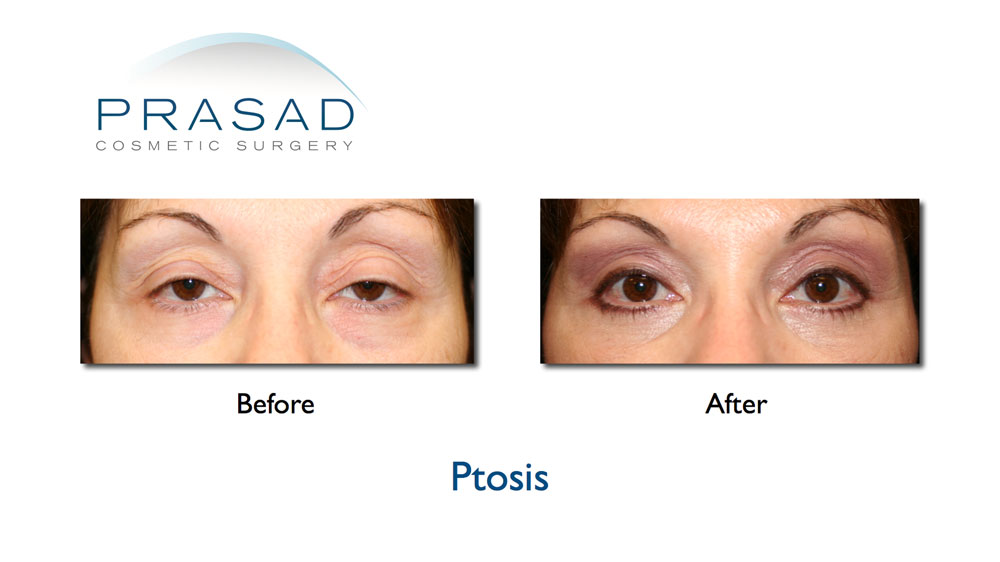
What is the best procedure for droopy eyelids?
During Consultation
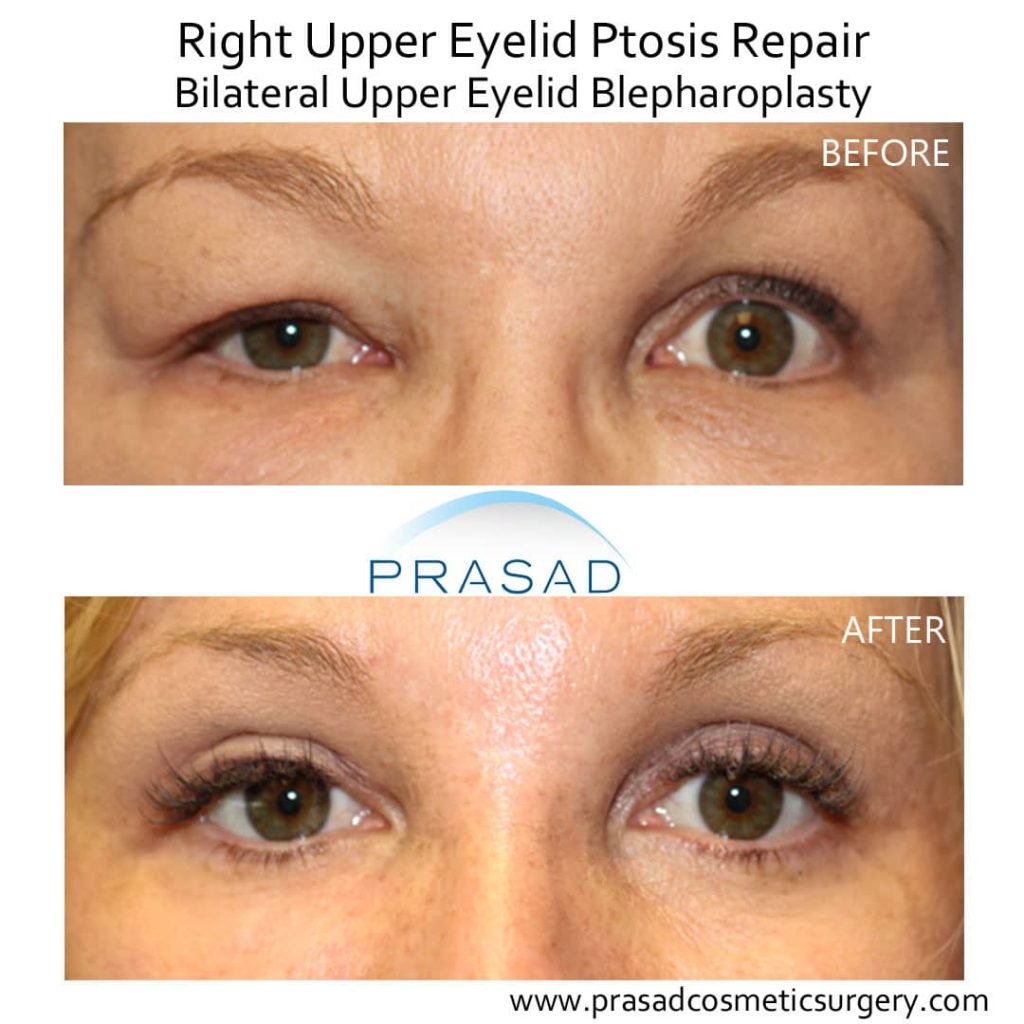
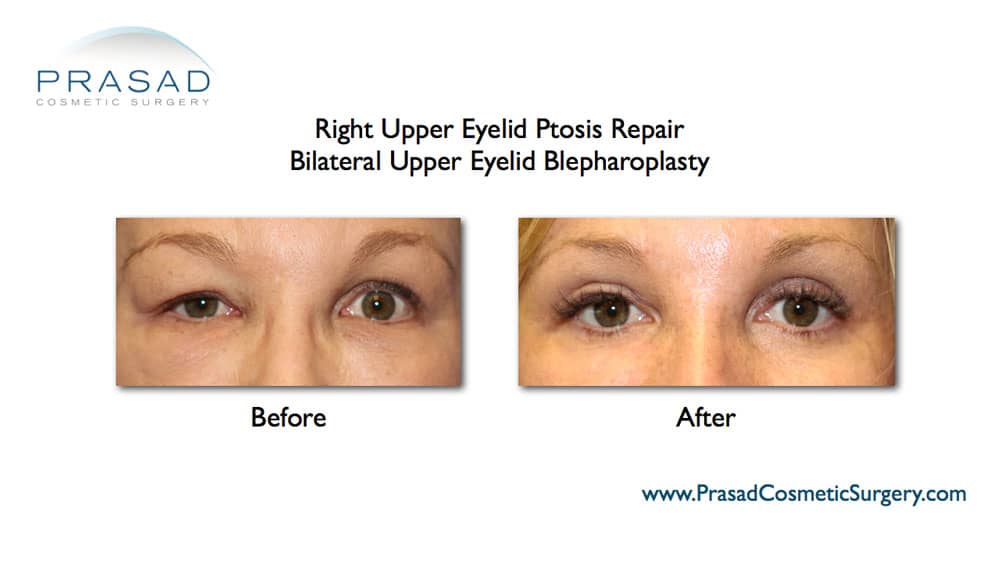
During my examination, I explain how excess skin over the eyelids known as dermatochalasis, differs from eyelid drooping caused by the levator muscle, which is known as ptosis. People who have had cosmetic eyelid surgery or upper eyelid blepharoplasty elsewhere frequently come in concerned that they still look tired. This is because they had the upper eyelid skin removed, but nothing was done to address the underlying muscle causing the eyelid droop.
The majority of ptosis surgeries are for acquired ptosis caused by progressive stretching or thinning of the levator muscle. Some patients come in saying they’ve always had low upper eyelids, also known as “bedroom eyes,” and that as time passed, the eyelids became lower and made them look tired.
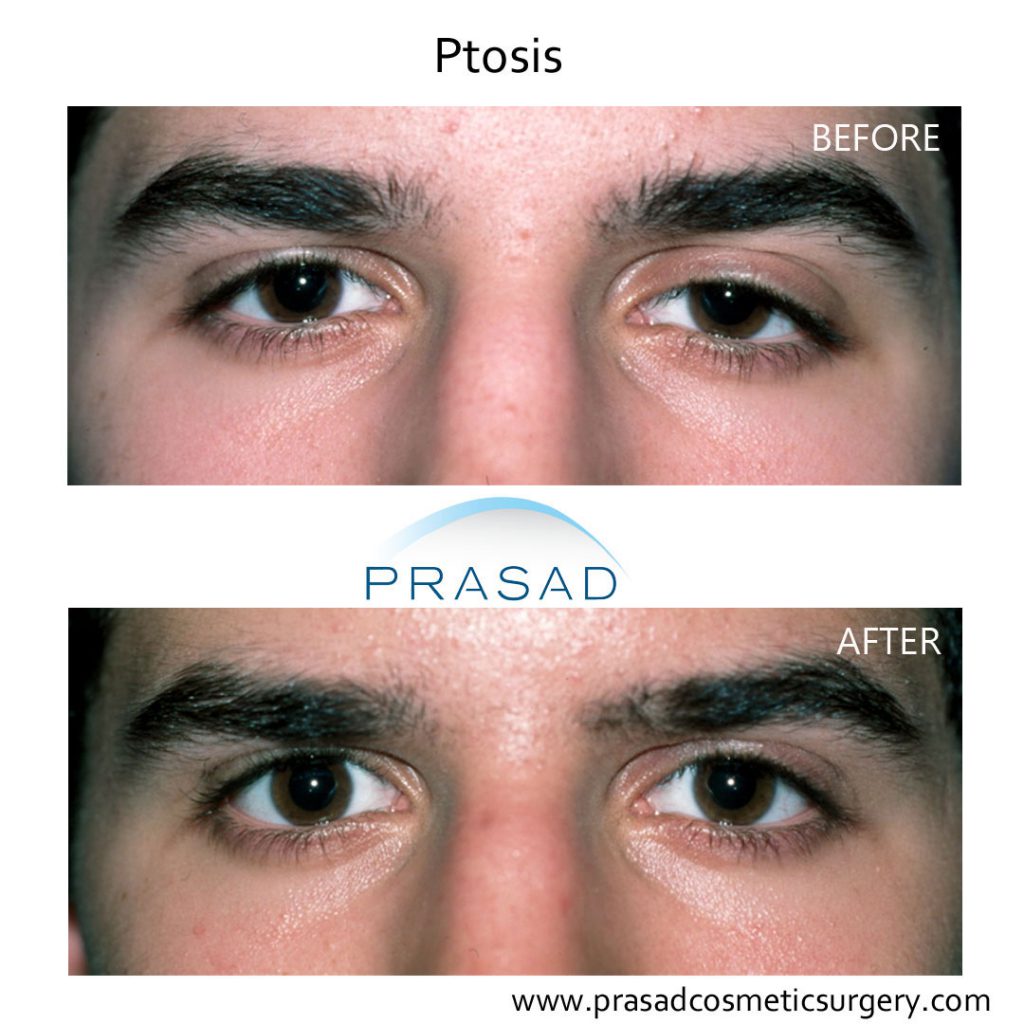
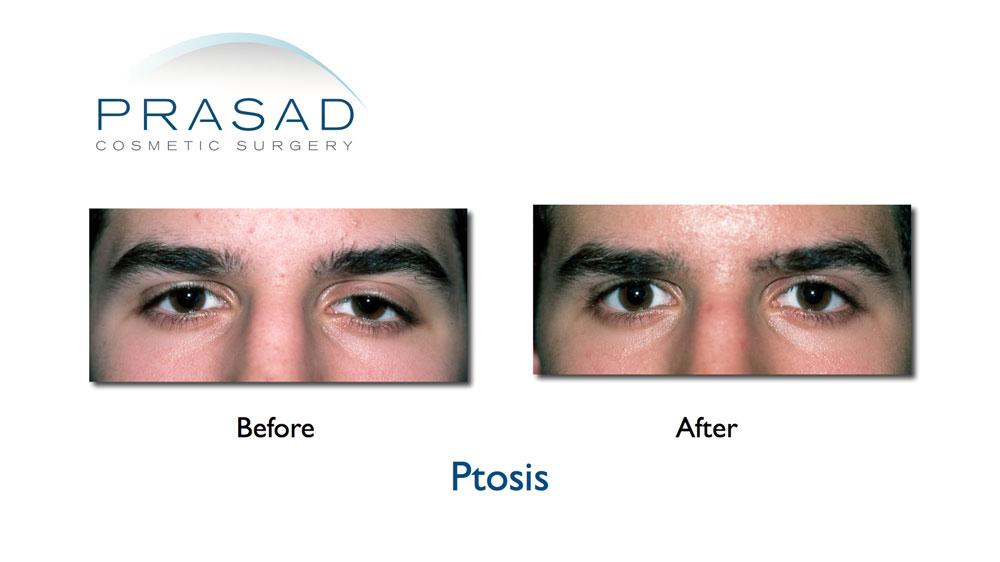
Objective of the Procedure
How is the procedure performed?

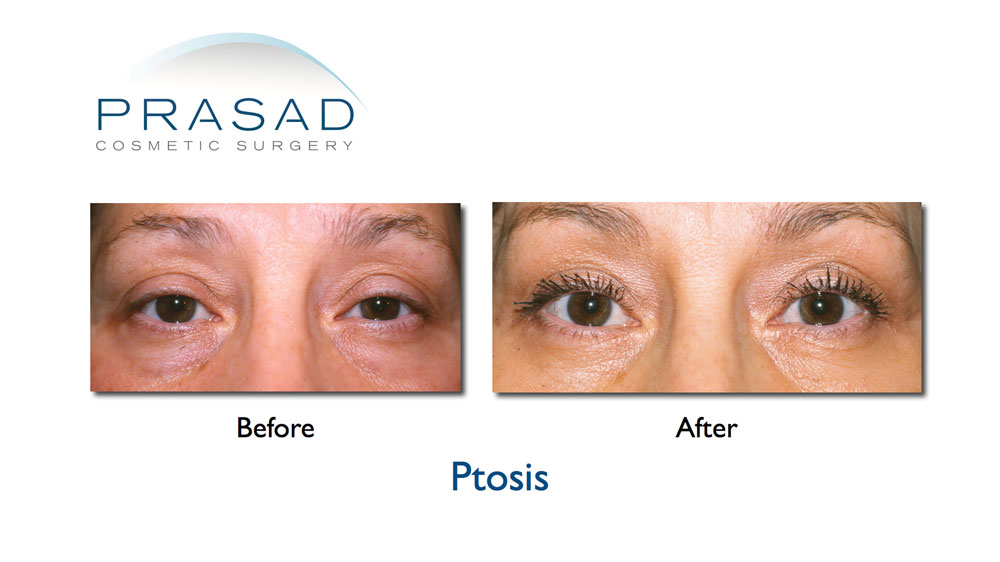
Droopy Eyelid Surgery Recovery
Swelling of the eyelids is a normal part of the healing process. The amount of post-surgical swelling is determined by the extent of the surgery, and the physiology of the individual patient. Cold compresses help reduce the initial swelling after surgery in the first two days. The clearance of swelling after the first two days is dependent on the amount of swelling and circulation. I encourage my patients to get up and move around by walking, talking, and smiling, and if they intend to be more sedentary, warm compresses can help.
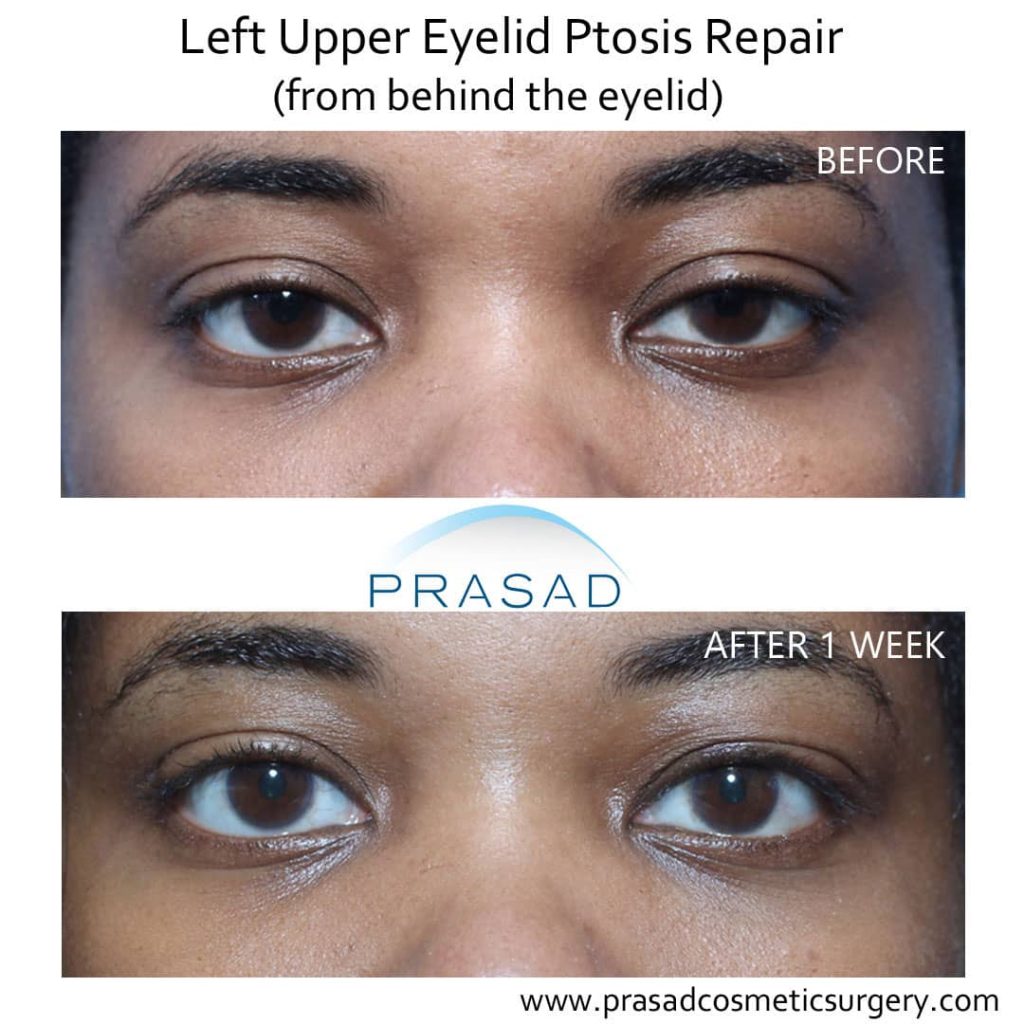
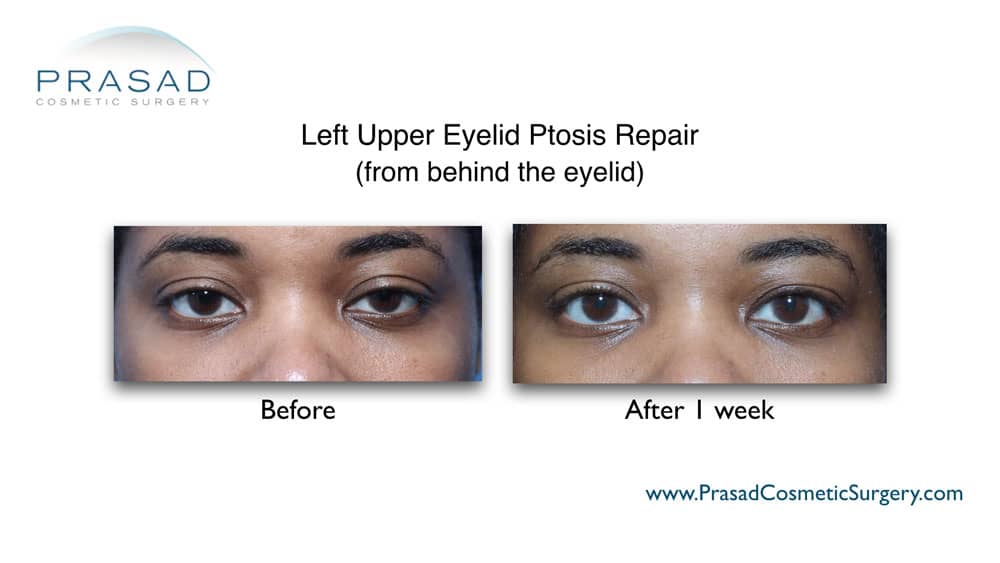
After one week, the majority of people return to work. I see our patients more frequently in the first two months after surgery, and then at approximately three-month intervals for the next year.
In general, I anticipate a close to final appearance at around 6 months. Swelling may last longer than usual if a patient has a history of allergies, sinus problems, smoking, or other circulation issues.
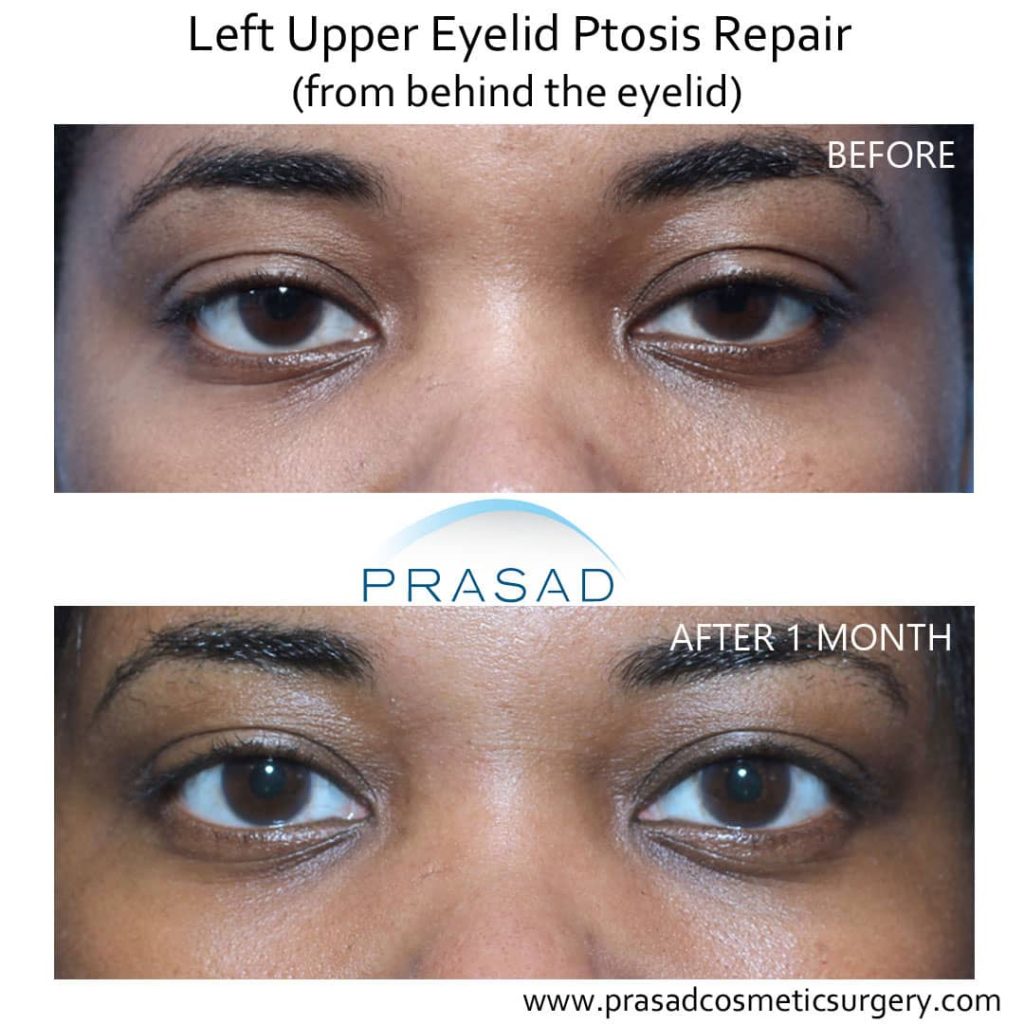
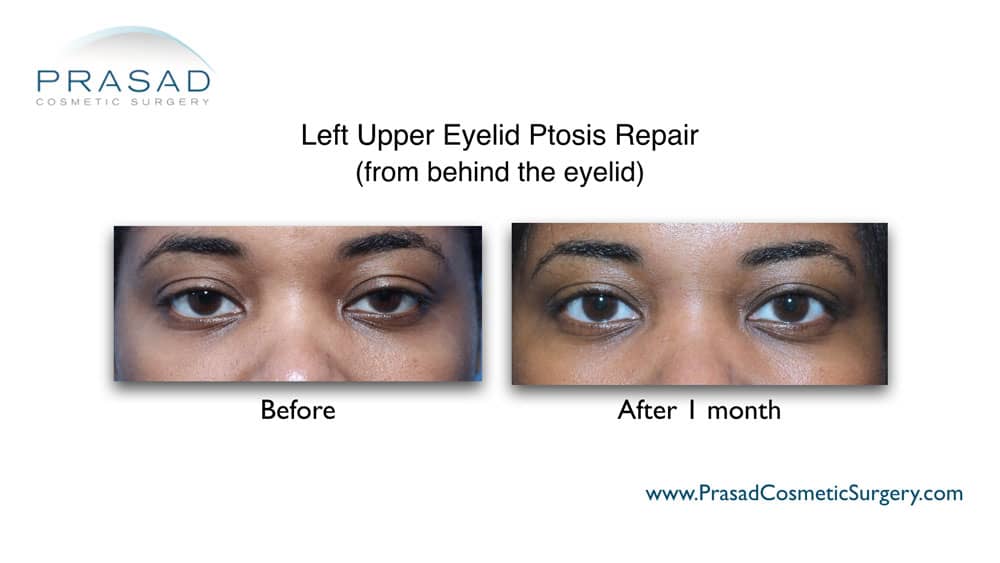
Is droopy eyelid surgery risky?
Droopy eyelid surgery can improve your appearance and confidence significantly. Functionally, eyelid ptosis can impair vision and visual development in children between birth to age six. If you’re unsure whether you have ptosis and whether you should have surgery, consult with a Fellowship-trained oculofacial plastic surgeon to learn more about your situation and options.
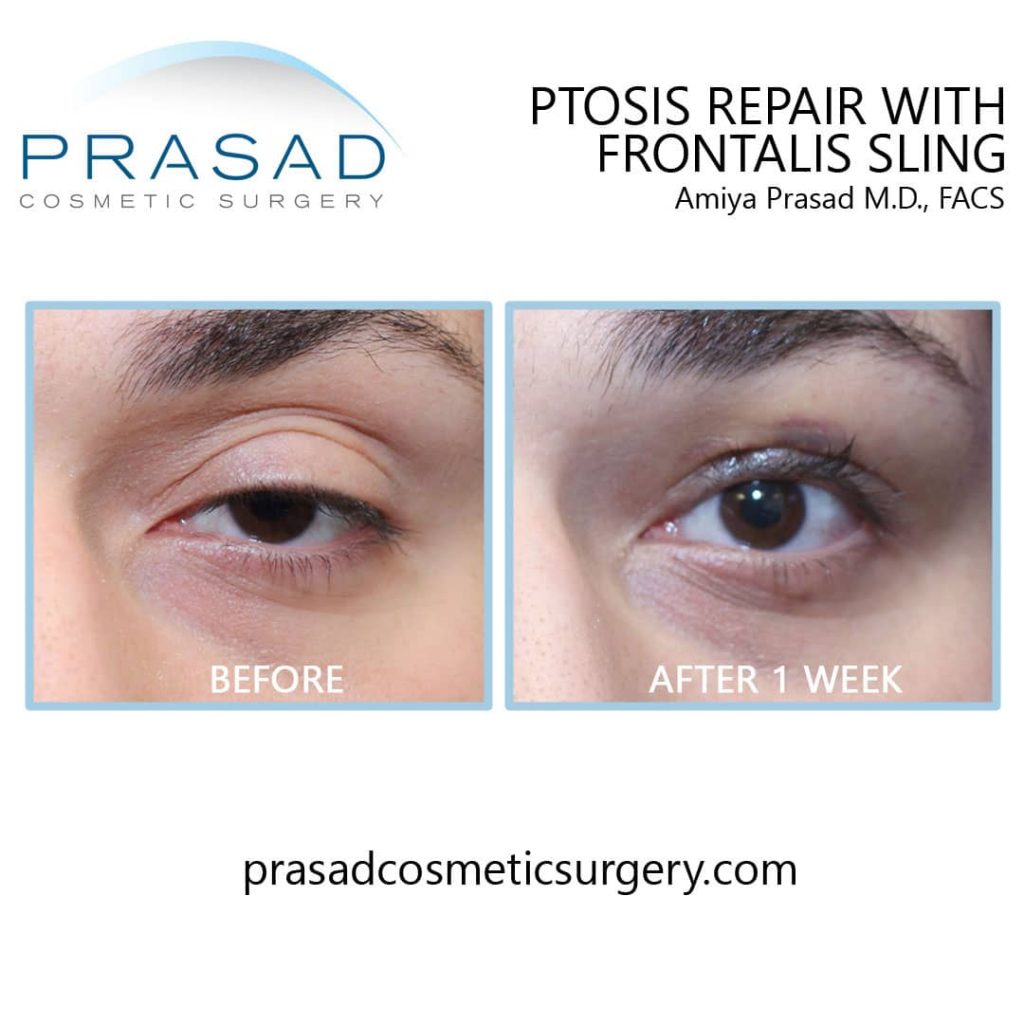
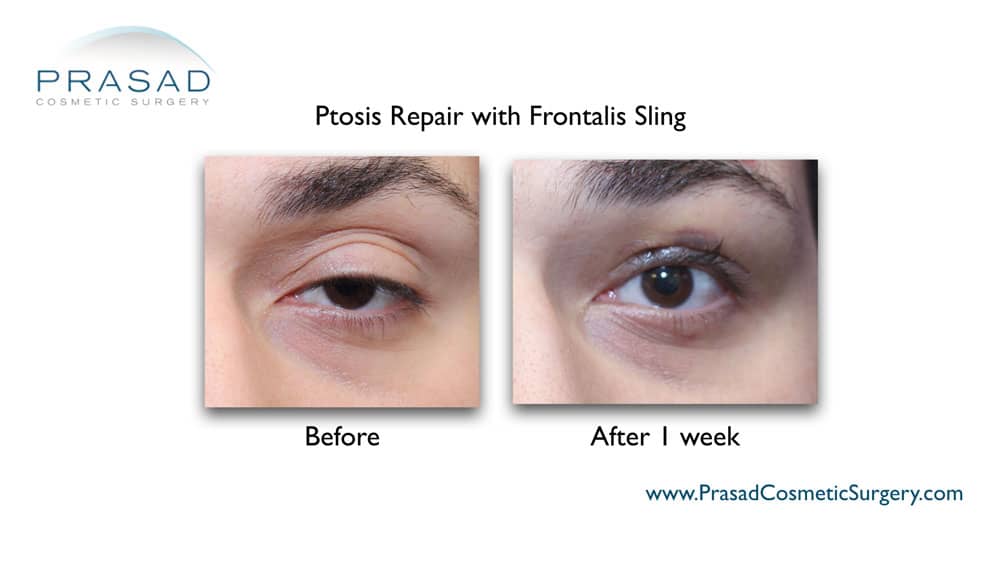
Droopy Eyelid Surgery in NYC and Long Island, New York
Dr Amiya Prasad is a Board-certified cosmetic Surgeon and Fellowship-trained oculoplastic surgeon. He’s been in practice in Manhattan and Long Island for over 25 years. He routinely treats a wide range of ptosis patients in his practice. Many of his patients are patients who’ve undergone previous eyelid surgery done elsewhere.
To schedule a consultation, fill out the form below, or contact any of our offices at (212) 265-8877 for the Manhattan, New York City office; (516) 742-4636 for the Garden City, Long Island office; or (703) 356-1336 for the Vienna, Virginia office.

